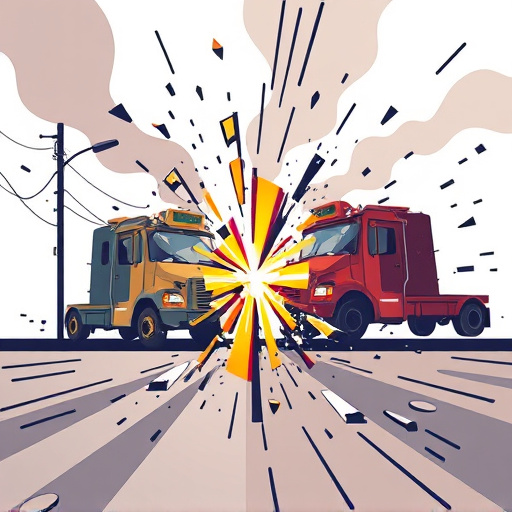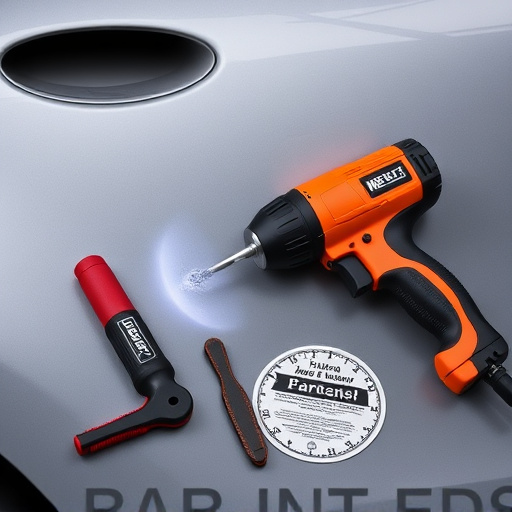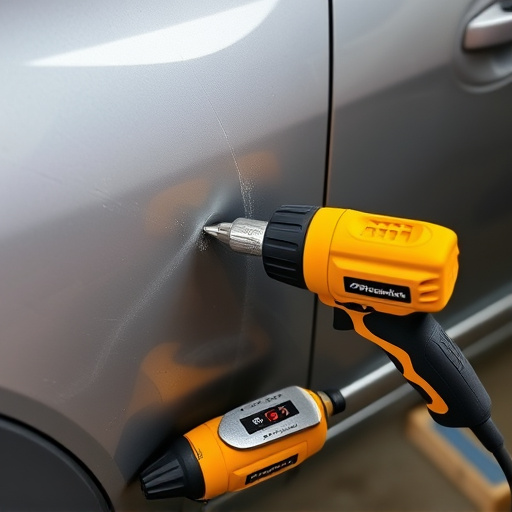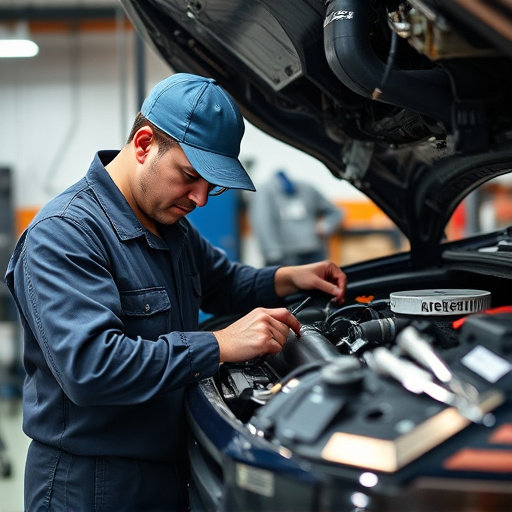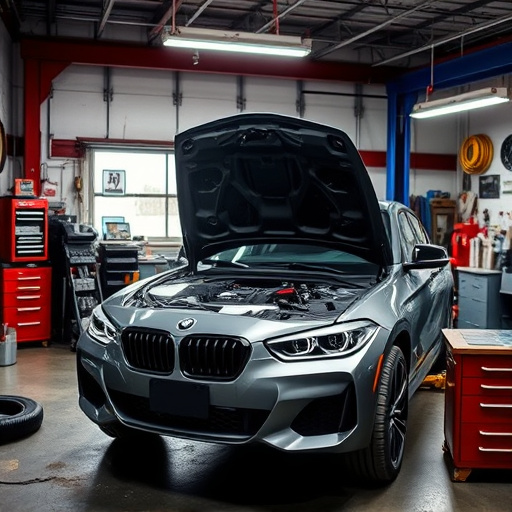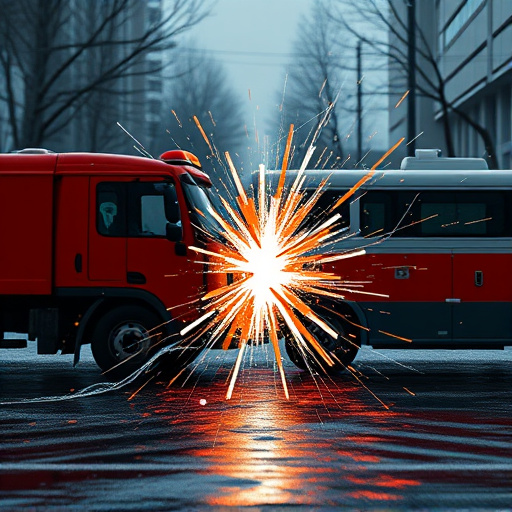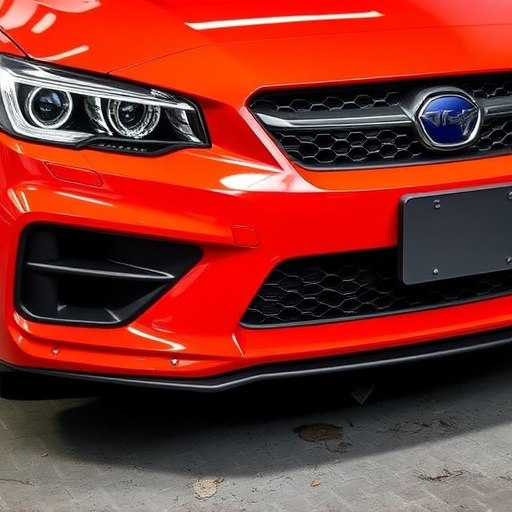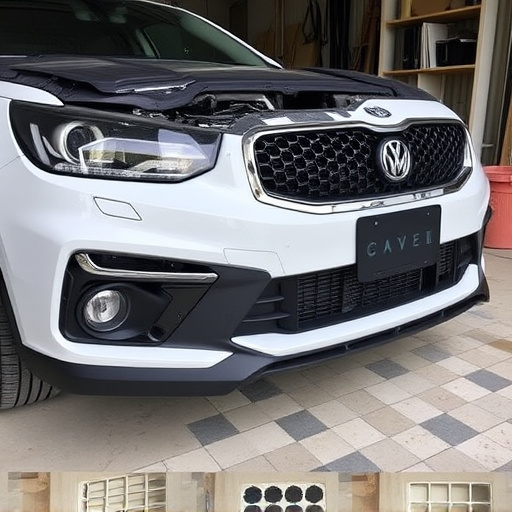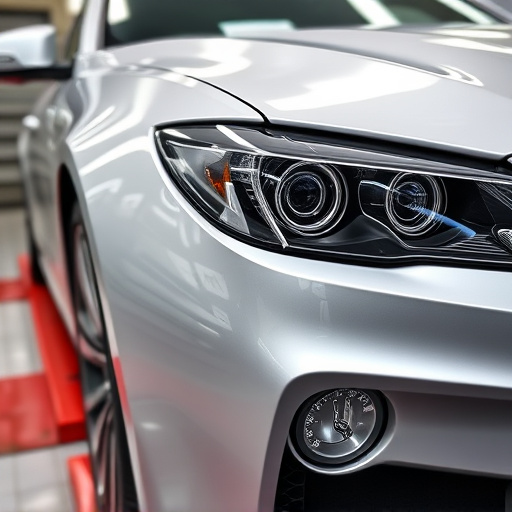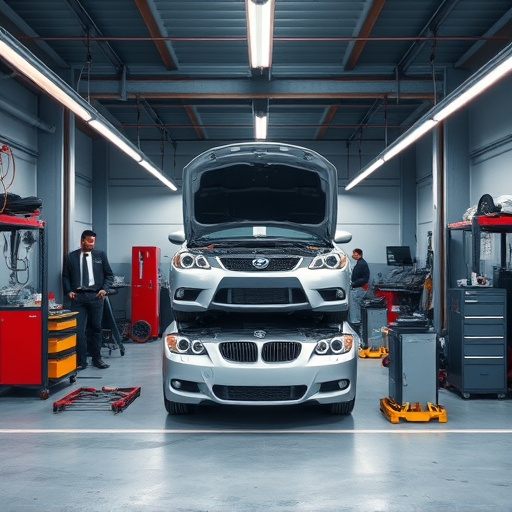MIG welding collision repair is a highly efficient technique for restoring damaged vehicles. Optimizing wire feed speed and gas flow enhances weld quality and speed. Choosing high-quality spools like stainless steel or aluminum ensures consistent results and minimizes distortion in intricate repairs. Safety is paramount, with proper PPE, ventilation, and fire suppression systems required. Understanding MIG settings for different metals and thicknesses is crucial for successful classic car restoration. Regular safety protocol updates ensure adherence to industry standards.
Discover the art of efficient and precise MIG welding collision repair with our exclusive guide. Uncover seven powerful secrets that transform the way you approach car body repairs, enhancing both quality and speed. From mastering advanced techniques to selecting the ideal spools, this article equips you with knowledge for exceptional results. Ensure safety remains paramount while exploring essential precautions tailored for MIG welding collision repairs.
- Unlocking Efficiency: Techniques for MIG Welding Collision Repair
- Material Matters: Choosing Right Spools for Better Results
- Safety First: Essential Precautions in MIG Collision Repairs
Unlocking Efficiency: Techniques for MIG Welding Collision Repair
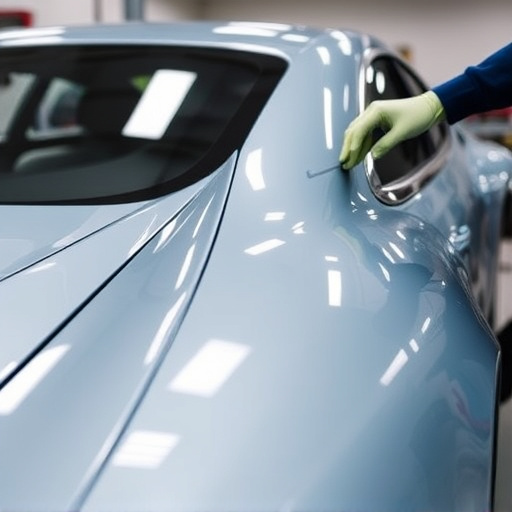
In the realm of MIG welding collision repair, efficiency is key to ensuring swift and high-quality restoration of damaged vehicles. This advanced welding technique offers a myriad of benefits for car bodywork services, making it a preferred choice among professionals in the auto painting industry. By employing precise and controlled arc welding, MIG (Metal Inert Gas) welding allows for seamless fusion of metal, enabling quick repair and restoration of car bodies.
The secrets to unlocking maximum efficiency lie in mastering specific techniques. For instance, using the appropriate wire feed speed and gas flow settings can significantly impact weld quality and speed. Additionally, maintaining a consistent arc length and angle ensures clean, robust welds. Proficiency in these skills not only streamlines collision repair processes but also results in superior, long-lasting car paint repair outcomes, ensuring vehicles return to their pre-accident condition.
Material Matters: Choosing Right Spools for Better Results
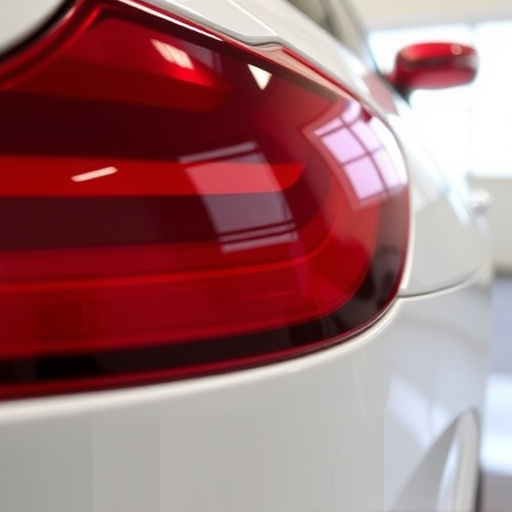
In MIG welding collision repair, selecting the right spools is a crucial step that often goes unnoticed but significantly impacts the outcome. The choice of material for these spools isn’t just about convenience; it directly affects the quality and consistency of the welds. Look for spools made from high-quality, durable materials designed to withstand the intense heat and pressure of MIG welding. Stainless steel and aluminum are popular choices due to their excellent thermal conductivity, ensuring efficient heat transfer and minimizing heat distortion in the repair process.
Using the appropriate spools is particularly vital when dealing with intricate car damage repair or complex auto maintenance tasks. The right material choice ensures the spool doesn’t melt or deform during welding, leading to weak or unsightly welds. Conversely, high-quality spools enhance the precision and speed of your work, contributing to better body shop services overall.
Safety First: Essential Precautions in MIG Collision Repairs

In the realm of MIG welding collision repair, safety is paramount. Before beginning any work on a vehicle, whether it’s for fender repair or a more intricate classic car restoration, it’s crucial to prioritize personal protective equipment (PPE). This includes wearing eye protection, long sleeves, gloves, and a respirator to shield against sparks, metal fumes, and dust. The workshop itself should be well-ventilated and equipped with proper fire suppression systems due to the potential for flammable gases and spark ignition.
Additionally, understanding the specific materials and equipment is vital. MIG welding requires precise settings, including voltage, wire speed, and gas flow, which must be adjusted based on the metal type and thickness. For vehicle repair, this means considering not only the structural integrity but also the aesthetic impact, especially in classic car restoration projects where every detail matters. Safety protocols should be continuously reviewed and updated to stay current with industry standards, ensuring a successful and safe MIG welding collision repair process.
MIG welding collision repair offers a powerful blend of efficiency and precision, revolutionizing the way we approach auto body repairs. By mastering techniques like those discussed, selecting the right spools, and prioritizing safety, professionals can achieve top-notch results faster and more cost-effectively. These seven secrets empower technicians to navigate complex repairs with confidence, ensuring flawless fusion and a restored vehicle that meets the highest standards of quality.

